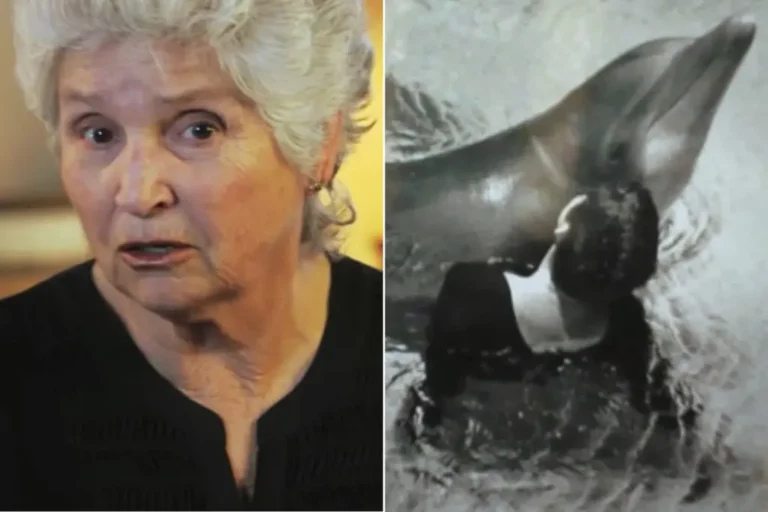The Chilling Legacy of Georgia Tann: The Woman Who Stole Babies From the Poor
Explore the chilling legacy of Georgia Tann, who stole thousands of babies from poor families, including Alma Sipple’s child, to sell to wealthy elites.
Georgia Tann, a name synonymous with one of the darkest chapters in adoption history, built an empire by stealing babies from poor families and selling them to wealthy elites. This story is centered around Alma Sipple, one of the many victims of Tann’s notorious baby trafficking ring. The psychological and emotional scars of her actions are still felt today, as the adoptees and their birth families continue to grapple with the trauma of separation.
Alma Sipple: One of Georgia Tann’s Victims

The story of Alma Sipple is a tragic reminder of the extent to which Georgia Tann went to fulfill her lucrative business of baby trafficking. Alma was a poor mother living in Tennessee when Tann entered her life under the guise of providing aid for her newborn daughter. What Alma didn’t know was that Tann had other plans.
One day, Tann’s associates took Alma’s daughter under the pretense of giving her medical care. Despite Alma’s desperate attempts to get her child back, she was misled, manipulated, and told her daughter had died. In reality, her baby had been sold to a wealthy family, just like thousands of others.
This heartbreaking deception is just one of many examples of Tann’s schemes. For Alma, it meant a lifetime of searching for the child she never saw again.
Who Was Georgia Tann?
| Attribute | Details |
|---|---|
| Full Name | Georgia Tann |
| Born | July 18, 1891, in Philadelphia, MS |
| Died | September 15, 1950 |
| Occupation | Adoption Facilitator, Director of the Tennessee Children’s Home Society |
| Notorious For | Baby Trafficking, Manipulating Adoption Records |
| Victims | Over 5,000 children and their families |
Georgia Tann was not always a criminal mastermind. Born into a respectable family, she initially pursued a career in social work. By 1924, she became the director of the Tennessee Children’s Home Society, a position that gave her unfettered access to the state’s adoption system.
With her charm and connections, Tann positioned herself as a compassionate figure, helping children find homes. But beneath this facade, she ran a dark business. Tann would target vulnerable, impoverished mothers like Alma Sipple, taking their babies under the guise of providing medical assistance or help.
Tann had built relationships with the rich and famous, which made her illegal adoption schemes profitable. She often manipulated adoption records, changing the names of children and lying to adoptive parents about the origins of the babies.
The Adoption Scandal Unveiled
Georgia Tann’s illegal operations continued unchecked for decades, largely due to her influence over local politicians and judges. Tann’s modus operandi was simple but effective: she would target poor, unwed mothers, convincing them that their children would be better off in the care of the state. However, instead of putting these children into foster care or legitimate adoption channels, she sold them for large sums of money to wealthy families across the country.
Tann carefully covered her tracks, destroying or falsifying records so that birth mothers had little recourse in finding their children. Her criminal network included doctors, nurses, and even social workers who helped her manipulate the system.
How Georgia Tann Operated Her Illegal Adoption Network
The scope of Tann’s illegal operation was vast, involving many people. Working at the Tennessee Children’s Home Society gave her access to thousands of children, especially newborns. Here’s how her illegal network worked:
- Targeting Vulnerable Mothers
Tann preyed on women like Alma Sipple, often convincing them that their children were in poor health and needed medical attention. Once the child was taken, Tann would tell the mother that her baby had either died or was being cared for by the state. - Collusion With Authorities
Judges and political figures in Memphis enabled her operation by turning a blind eye. In exchange for their silence, Tann would often facilitate the adoption of babies to influential families. - Forging Documents
Birth certificates and adoption records were often falsified, making it impossible for birth families to track their stolen children. - Selling to the Wealthy
Tann charged exorbitant fees for adoption placements, turning her criminal enterprise into a lucrative business.
The Rich and Powerful Families Who Benefited from Georgia Tann’s Actions
Georgia Tann’s clientele included the rich and famous. Many Hollywood stars and influential figures adopted children from Tann, often unaware of the illegal means through which the children were procured. Some notable examples include:
- Joan Crawford, who adopted twins through Georgia Tann’s network.
- Wealthy East Coast families, who were drawn to the idea of adopting “healthy” children through Tann’s agency.
These families were kept in the dark about the true origins of the children, many of whom had been forcibly taken from their birth mothers. Tann presented herself as a savior for these orphans, crafting an image that contrasted sharply with the reality of her criminal activities.
The Aftermath and Legal Battles
After Georgia Tann’s death in 1950, the true extent of her crimes began to surface. Investigations revealed that over 5,000 children had been stolen and sold, with many of these children never finding their birth families again.
The legal fallout was immense. Birth families, like Alma Sipple’s, fought for decades to reconnect with their lost children, but many were thwarted by the destruction of records. For some children, the truth came too late, as their birth parents had passed away.
While the state of Tennessee tried to make amends, offering some restitution to the victims, the emotional scars of Tann’s crimes were irreversible.
The Psychological and Emotional Toll on the Children and Families
The trauma caused by Georgia Tann’s actions extends beyond just the parents whose children were stolen. Many adoptees, now adults, have shared their stories of growing up in loving homes, only to discover the truth about their origins later in life. For these individuals, the knowledge that they were taken from their birth families has caused deep emotional distress.
Alma Sipple’s story, like that of countless others, is a tale of grief and unresolved loss. Many of the children adopted through Tann’s network were too young to remember their birth families, and efforts to reunite have often been unsuccessful.
“It’s like a piece of me has been missing all my life,” said one adoptee when interviewed about discovering her true parentage.
Reforming the Adoption System After Georgia Tann
The exposure of Georgia Tann’s illegal adoption network led to sweeping reforms in the adoption system, both in Tennessee and across the United States. Some key reforms include:
- Stricter Regulations
Adoption laws were reformed to ensure that all adoptions are transparent and that birth families are fully informed of their rights. - Improved Record-Keeping
New policies mandated accurate documentation, ensuring that adoptive families could access the full history of their children’s adoptions. - Child Welfare Initiatives
Efforts were made to prioritize the welfare of children in the adoption process, preventing further exploitation.
Georgia Tann’s Place in History: A Cautionary Tale
Georgia Tann is now remembered as one of the most notorious figures in adoption history. Her actions, which caused unimaginable pain to thousands of families, serve as a stark reminder of the potential for corruption when power goes unchecked.
Tann’s story is not just a historical footnote; it is a cautionary tale about the importance of transparency, ethics, and accountability in adoption. While reforms have been made, the legacy of Tann’s actions continues to impact families today, as adoptees and their birth families search for answers to questions that may never be fully resolved.






